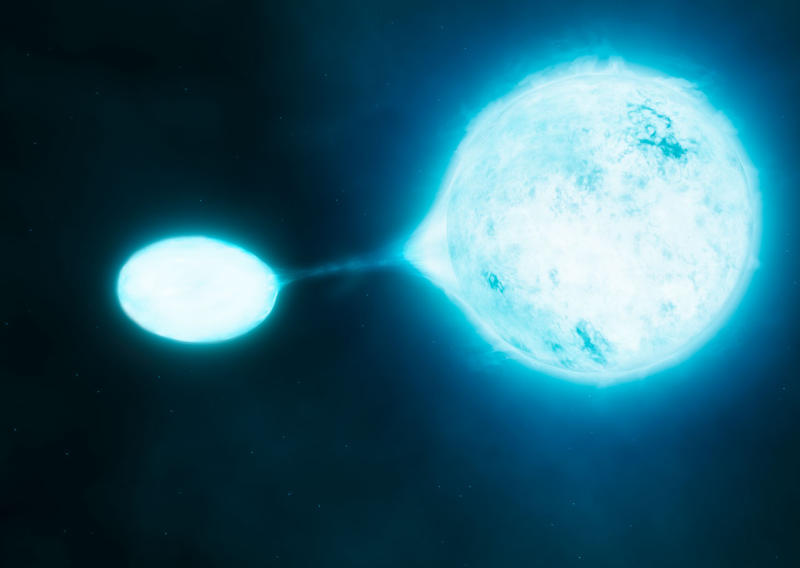Science News
Companion Stars
August 3, 2012
by Alyssa Keimach

Much like people, some stars live in pairs. Except their partnerships may persist for many millions or billions of years… Talk about long-term relationships!
A recent study in Science demonstrates that high-mass stars are more often found in partnerships rather than alone. These partnered O-type stars possess about 15 times more mass than our sun and shine up to a million times brighter. The European Southern Observatory's Very Large Telescope (VLT) has found that a surprising three quarters of these stars have nearby companions.
Astronomers have long debated how many stars live out solitary lives versus existing in binary systems—two stars revolving around each other in close orbits. With the discovery of these new partner stars, astronomers once again have to reevaluate their contribution to galactic evolution.
These supermassive O-type stars are not common, but they have a disproportionately significant influence on the chemical make up of our galaxy. When they die, their supernovae distribute heavy elements (such as iron and oxygen and other ingredients important to life) into the Universe.
Even more interesting; many of the supernovae from supermassive stars are surprisingly hydrogen-poor. This may result from the “vampire star” phenomenon—a very unequal, possibly unfair partnership!
Vampire stars suck up hydrogen from their supermassive counterparts. This causes the vampire star to extend its lifespan, while the supermassive star is stripped of everything but its hot blue core. This causes both stars to take on a younger appearance, which, among other things, can make it hard for astronomers to determine the age of a far-off galaxy.
“The life of a star is greatly affected if it exists alongside another star,” says Selma de Mink of the Space Telescope Science Institute, a co-author of the study. “If two stars orbit very close to each other they may eventually merge. But even if they don’t, one star will often pull matter off the surface of its neighbor.”
Astronomers estimate that about 40-50% of supermassive stars will fall victim to a “vampire star,” while another 20-30% will face a fatal merge. These highly energetic progressions, along with potential gamma-ray bursts, are some of the most extreme galactic phenomena to date.
For a video visualizing how star couples evolve, look here.
Alyssa Keimach is an astronomy and astrophysics student at the University of Michigan and volunteers for the Morrison Planetarium.
Image: ESO/L. Calçada/S.E. de Mink